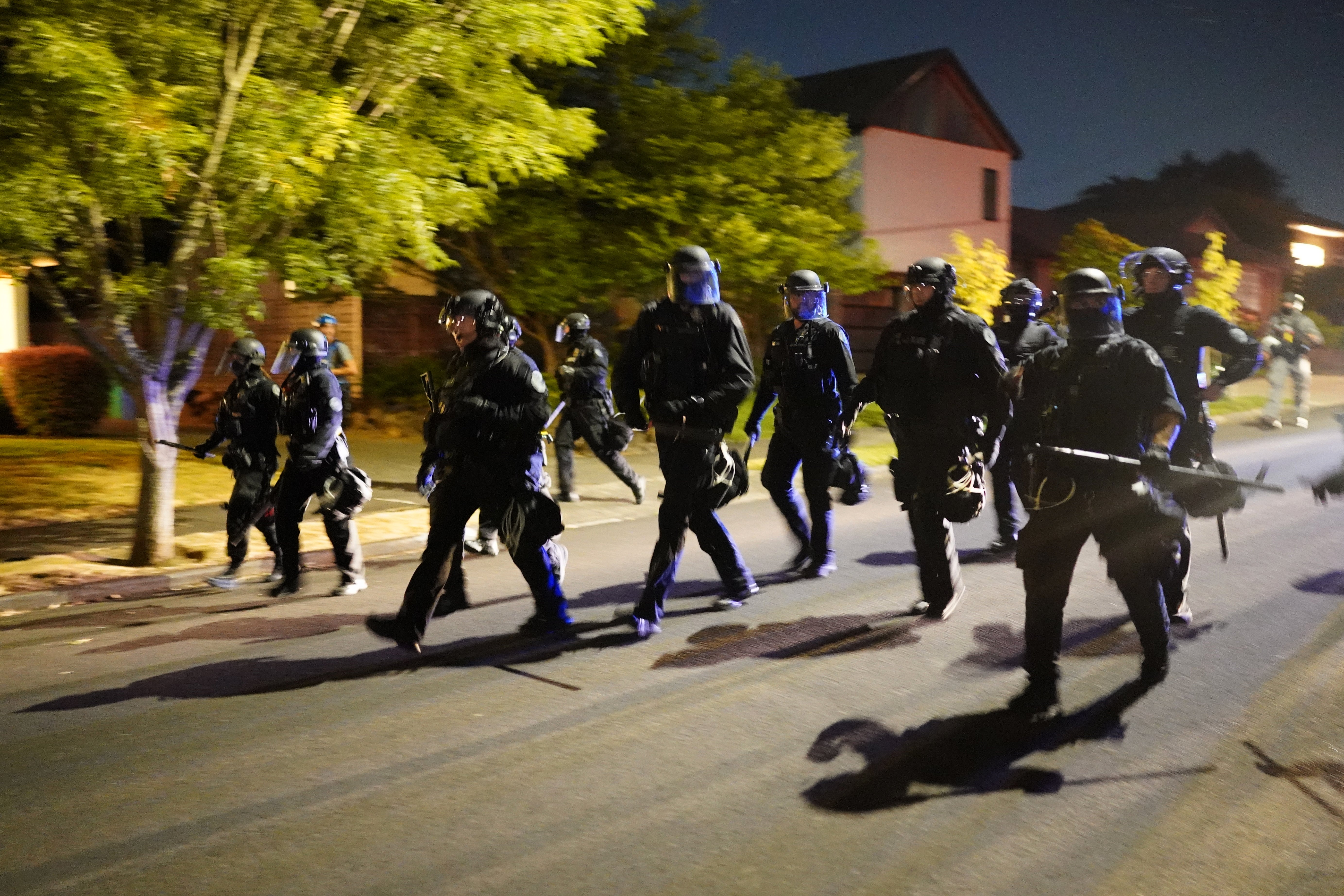The debate over coverage of trans people is fracturing the New York Times newsroom
Trans kids are under attack in states across the country. Is the biggest name in news covering things fairly or making things worse? Josh Marcus reports


Your support helps us to tell the story
From reproductive rights to climate change to Big Tech, The Independent is on the ground when the story is developing. Whether it's investigating the financials of Elon Musk's pro-Trump PAC or producing our latest documentary, 'The A Word', which shines a light on the American women fighting for reproductive rights, we know how important it is to parse out the facts from the messaging.
At such a critical moment in US history, we need reporters on the ground. Your donation allows us to keep sending journalists to speak to both sides of the story.
The Independent is trusted by Americans across the entire political spectrum. And unlike many other quality news outlets, we choose not to lock Americans out of our reporting and analysis with paywalls. We believe quality journalism should be available to everyone, paid for by those who can afford it.
Your support makes all the difference.We are living through an era of political attacks on LGTBQ+ youth.
As The Independent has reported, a “historically bad” slate of proposals impacting LGTBQ+ children’s access to core needs like healthcare and inclusive education are working their way through Republican-controlled state legislatures.
What’s up for debate is how this era should be covered by The New York Times, long considered the paper of record for the US.
Critics have long argued that theTimes is falling short in its LGTBQ+ coverage, particularly of trans kids, but the debate around the publication’s standards exploded into public view last week.
Thousands of Times contributors signed onto an open letter, organized by the Freelance Solidarity Project and delivered to leadership on 15 February, which voiced “serious concerns about editorial bias in the newspaper’s reporting on transgender, non-binary, and gender nonconforming people.”
The letter accused the storied paper of violating its own ethical standards around neutrality by treating “gender diversity with an eerily familiar mix of pseudoscience and euphemistic, charged language, while publishing reporting on trans children that omits relevant information about its sources.”
The letter pointed to a recent article referring to a person seeking gender-affirming healthcare with the term “patient zero,” and another instance where a source’s affiliation with an anti-trans hate groups wasn’t mentioned.
The document noted with dismay that coverage by The New York Times has been cited by various GOP officials who are waging attacks on trans youth in court and in legislatures across the country; it argued that the Times was fueling a similar media-political feedback loop that saw previous generations demonise those with HIV/Aids and those who were gay.
“You no doubt recall a time in more recent history when it was ordinary to speak of homosexuality as a disease at the American family dinner table—a norm fostered in part by the New York Times’ track record of demonizing queers through the ostensible reporting of science,” the letter added.
(Separately, the advocacy organisation GLAAD sent leaders at the Times a letter on the same day, accusing the paper of “irresponsible, biased coverage of transgender people.”)
Critic Jo Livingstone, who helped organise the letter, told Hellgate NYC of the effort: “I think one of the really key points that I want people to feel hits home is that there is no real separation between the way we use language and the idea of neutrally covering a subject. To suggest that there is no relationship between the way that we are using language at the newspaper to discuss people’s lives, people who are also being debated in court, is to really be willfully ignorant of what it is that we do as journalists.”
Outside critics cheered on the open letter as highlighting a troubling trend at the paper.
“This is pretty obviously—and yet not obviously enough—a plain old-fashioned newspaper crusade,” Tom Scocca wrote in Popula. “Month after month, story after story, the Times is pouring its attention and resources into the message that there is something seriously concerning about the way young people who identify as trans are receiving care. Like the premise that the Clintons had to have been guilty of something serious, or that Saddam Hussein must have had a weapons program worth invading Iraq over, the notion that trans youth present a looming problem is demonstrated to the reader by the sheer volume of coverage. If it’s not a problem, why else would it be in the paper?”

In the wake of the backlash, the Times has defended its coverage.
“As a news organization, we pursue independent reporting on transgender issues that include profiling groundbreakers in the movement, challenges and prejudice faced by the community, and how society is grappling with debates about care,” Charlie Stadtlander, the paper’s director external communications, said in a statement at the time of the original open letter. “The very news stories criticized in their letter reported deeply and empathetically on issues of care and well-being for trans teens and adults. Our journalism strives to explore, interrogate and reflect the experiences, ideas and debates in society — to help readers understand them. Our reporting did exactly that and we’re proud of it.”
Internally, executive editor Joe Kahn and opinion editor Kathleen Kingsbury chastised those who participated in the open letter.
“We do not welcome, and will not tolerate, participation by Times journalists in protests organized by advocacy groups or attacks on colleagues on social media and other public forums,” they wrote to staffers, Vanity Fair reports, arguing “participation in such a campaign is against the letter and spirit of our ethics policy.”
The day after the open letter went public, the Times opinion section published a lengthy column defending Harry Potter author JK Rowling against the longstanding accusations that she is transphobic.
The controversy didn’t end there.
Later that week, Susan DeCarava, president of the NewsGuild of New York, which represents some Times staffers, posted a public letter of her own declaring “employees are protected in collectively raising concerns that conditions of their employment constitute a hostile working environment.”
“This was the concern explicitly raised in the letter at issue here,” she added.

This too set off debate, as Semafor has reported, with some union members arguing she had overstepped.
“Criticism of workplace conditions does not include attacking the journalism of other members,” reporter Stephanie Saul wrote in a Times union Slack chat, according to Semafor. “I strongly object to this letter and I would hope other members of the unit agree with me.”
The back and forth continued into this week, when another group of Times journalists, including high-profile reporters like Peter Baker and Charlie Savage sent a letter to Ms DeCarava, according to Vanity Fair.
The letter suggested she was mistakenly arguing for “a workplace in which any opinion or disagreement about Times coverage can be recast as a matter of ‘workplace conditions.’… We are journalists, not activists. That line should be clear.”
The union told the magazine in response that “the Guild is committed to representing every member equally and fairly, regardless of reporting assignment.
“We take no position on the subject matter of editorial coverage and fight hard for every member’s right to work in a healthy and safe environment, free of harassment and discrimination. These are principles that are at the core of trade unionism and are central to our mission,” the organisation said.
The trans coverage controversy is hardly the first high-profile, internal blow-up at TheNew York Times.
In 2020, opinion editor and writer Bari Weiss resigned from the paper, arguing the outlet had created a “hostile” environment for her because her views weren’t sufficiently liberal.

That controversy began when the paper published an op-ed earlier that year from Senator Tom Cotton, which argued that the US military should be sent to quell the racial protests happening across the country.
Times staffers argued the piece was factually erroneous and put Black people in danger. The paper later said the piece “fell short of our standards and should not have been published.”
The op-ed generated a heated debate inside the Times newsroom, which Ms Weiss described on her Twitter as a “civil war” inside the paper “between the (mostly young) wokes the (mostly 40+) liberals.”
Her fellow writers took issue with this characterisation, and how she called out specific reporters in a Twitter thread that followed. They argued that one of the paper’s most high-profile stars was using social media to criticise them, but that the Times’ social media policies meant they may not have been able to defend themselves.
In the row over the aforementioned op-ed, another opinion editor, James Bennet, also resigned.
There are currently more than 300 pieces of legislation in state capitols across the US targeting LGBTQ+ kids, following an explosive, unprecedented year of state-level measures fuelled by influential conservative Christian legal groups and a “parental rights” agenda dominating Republican campaigns.
“It feels like my legislators want everyone to believe that kids like me don’t exist,” Libby Gonzales, a 12-year-old transgender student from Texas, recently told The Independent.
How the paper will report on trans people in the future remains to be seen, but it’s clear that outside the newsroom, legislators have already made up their minds about this vulnerable population in ways that worry advocates for children and LGTBQ+ people.



Join our commenting forum
Join thought-provoking conversations, follow other Independent readers and see their replies
Comments